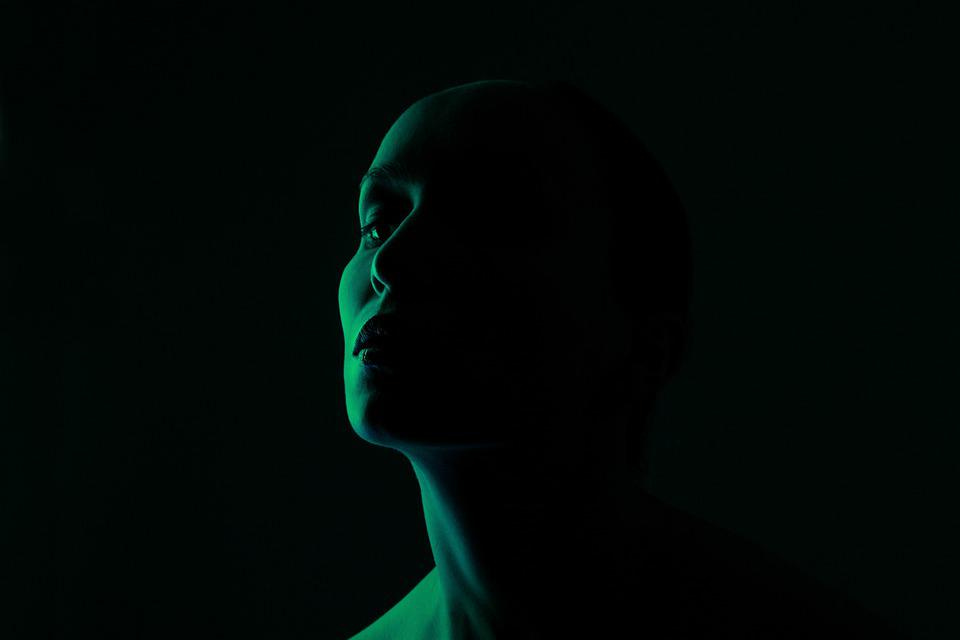Asymmetrical beauty
Some people are frustratingly beautiful. You know the type, the ‘how are they even real’ beautiful people. I know, I know, this sounds shallow. Let’s dive into those shallows, though.
Wikipedia summarizes a big bunch of research this way:
Heterosexual men, on average, tend to be attracted to women who have a youthful appearance and exhibit features such as a symmetrical face, full breasts, full lips, and a low waist-hip ratio. Heterosexual women, on average, tend to be attracted to men who are taller than they are and who display a high degree of facial symmetry, masculine facial dimorphism, upper body strength, broad shoulders, a relatively narrow waist, and a V-shaped torso.
I’m sure we’ve all heard that before. I’m also sure that - for most of us - it’s kind of true, whether we like to admit it or not.
Because (one of) my background(s) is in biology, I try to see organisms’ traits in an evolutionary light. So what’s going on here? Most of the traits in that quote tend to reflect a combination of good genes, good health, and a good upbringing (in a material sense, at least). On average, at a population level. Desirable partners, in other words. That’s how evolution works.
One of my favorite examples of this is fluctuating asymmetry. In most bilaterian organisms (with a left and right side) deviations from left-right symmetry often indicate genetic and environmental challenges to a normal developmental trajectory. Look at that quote one last time. What is a key component of physical attractivity in both sexes? That’s right, facial symmetry. (Facial because it’s usually the first thing we see of someone we haven’t met before. Our faces are our billboards.)
In and for most people, beauty is symmetrical.
The barely hidden ‘-ism’
The good thing is that what matters is what’s on the inside. Right? Did you burst into a fit of laughter as well? Of course, the inside matters. But thinking that it’s all that matters is, well, shallow.
Disney taught me that.
More precisely, the Disney version of ‘The Hunchback of Notre Dame’. I was still a wee lad when the movie came out, but I remember how something about it annoyed me. The female protagonist Esmeralda - apparently everyone’s love interest in the story - eventually ends up with Captain Phoebus. Bright-eyed, tall, handsome, noble Phoebus. Somehow, that irked little me. Quasimodo, in my young eyes, loved Esmeralda more, was willing to sacrifice his life for her, and - for me - was a better personality match. Alas.
Beautiful people are supposed to end up with beautiful people. Even Disney tells us this.
Looks matter. We might not like it, we might think we’re immune to it, we might be unwilling to admit it, but that doesn’t make it any less true. People form a first impression of you even before you speak a word. That impression is based on how you look. Look good? Good first impression. Not ‘conventionally attractive’ (to use a euphemism)? That less-than-positive first impression will be hard to change.
Sounds defeatist, but lookism (or beauty bias) is a real and widespread phenomenon, and it’s one of the pervasive ‘-isms’ we don’t really hear a lot about. Its impact is real. If you look good - regardless of sex or gender - according to the standards we’ve looked at earlier, job opportunities open up for you easier, you tend to have more friends, more sexual partners, and all kinds of good stuff. Even newborns might like you better. (This transfer of good qualities, the idea that beautiful = good, talented person, is also known as the ‘halo’ effect.)
Important interlude: Of course, beautiful people face challenges and stereotypes too. Of course, we should never (and cannot) blame someone for being beautiful. Of course, general standards of beauty don’t mean that tastes can’t differ.
Retraining the beholder’s eyes
At this point, I should strip away some of my inborn cynicism and restitute the importance of ‘the inside’.
Maybe we are all shallow when it comes to first impressions, but interpersonal interactions don’t end there. When you meet a beautiful person, work up the courage to talk to them, and then find out they’re not at all what you were expecting (in a negative way), the attraction might very well plummet.
So we end up with this tension: physical attractiveness matters, but it’s not all that matters. And how much it matters is an important consideration where - I think, without data to back this up - there will be a lot of variability between people. Some people get hung up on looks, for others those are of brief and quickly fleeting relevance.
This is somewhat good news. Beauty is in the beholder’s eyes, and even though we might be looking for the same things on the surface, we can (learn to?) decide to look deeper.
Here’s the bad news: it’s easier said than done. Beauty standards might well reflect general preferences (likely modified partially through cultural lenses), but as we lift them onto an elevated pedestal, their burden pushes down on us. Instagram filters are used to make us look more attractive, not less. Hollywood CGI and Photoshop are used to make celebs look better, not worse. In other words, we take these biologically-based preferences and amplify them to a degree that is very hard for almost anyone to live up to. (This reminds my biologist’s brain of so-called supernormal stimuli.)
At the same time, there is the occasional pushback against this. In a previous newsletter calling for more imperfect selfies, I mentioned, among others, #NoFilter, Filter vs Reality, and other trends that (on the surface?) try to welcome diversity and unconventionality in physical appearance.
I wonder what the future of physical attractiveness looks like. Will we fall to the filters and expect flawless, unrealistic ideals, or will we learn to look deeper? What do you think?





